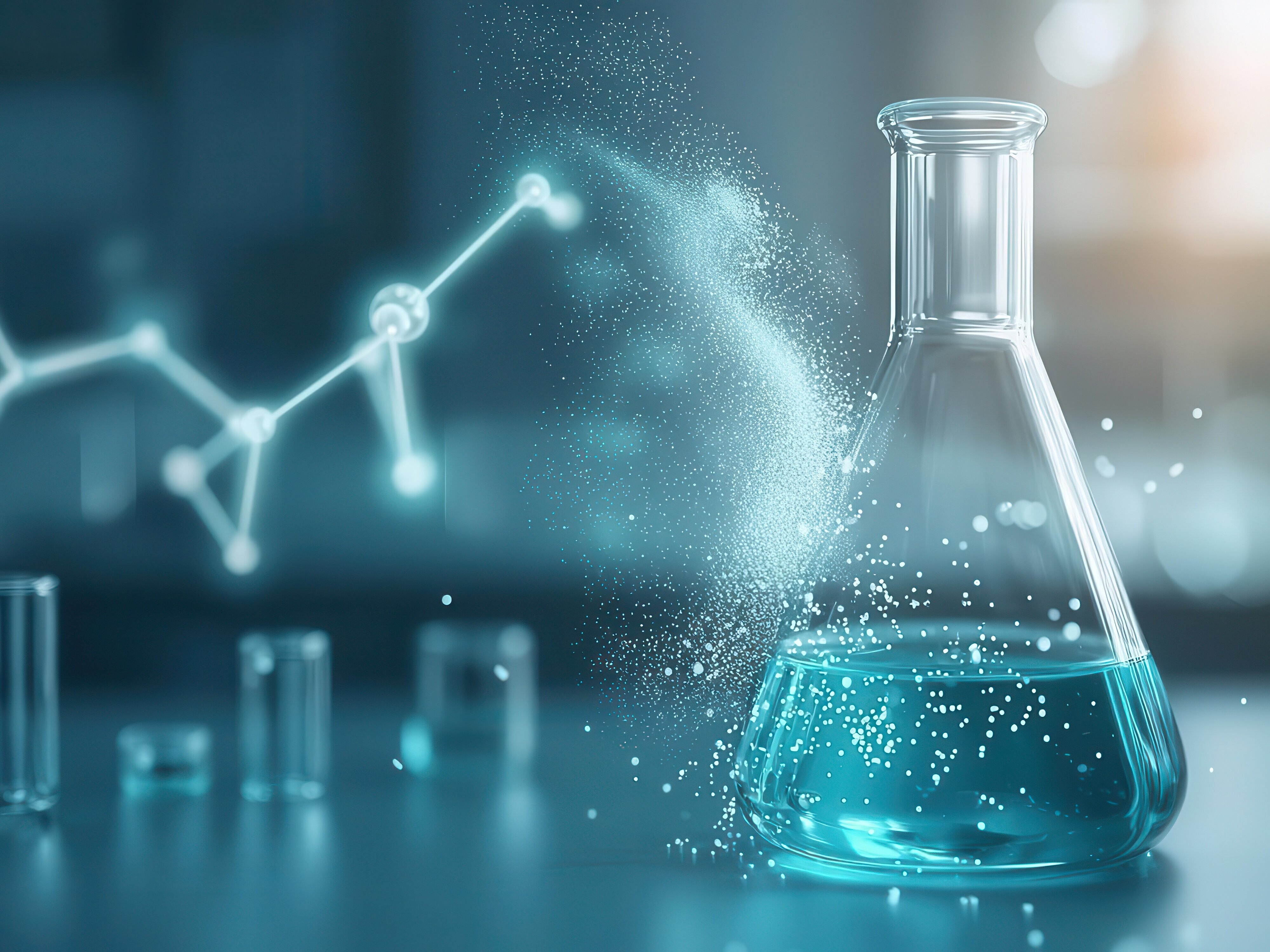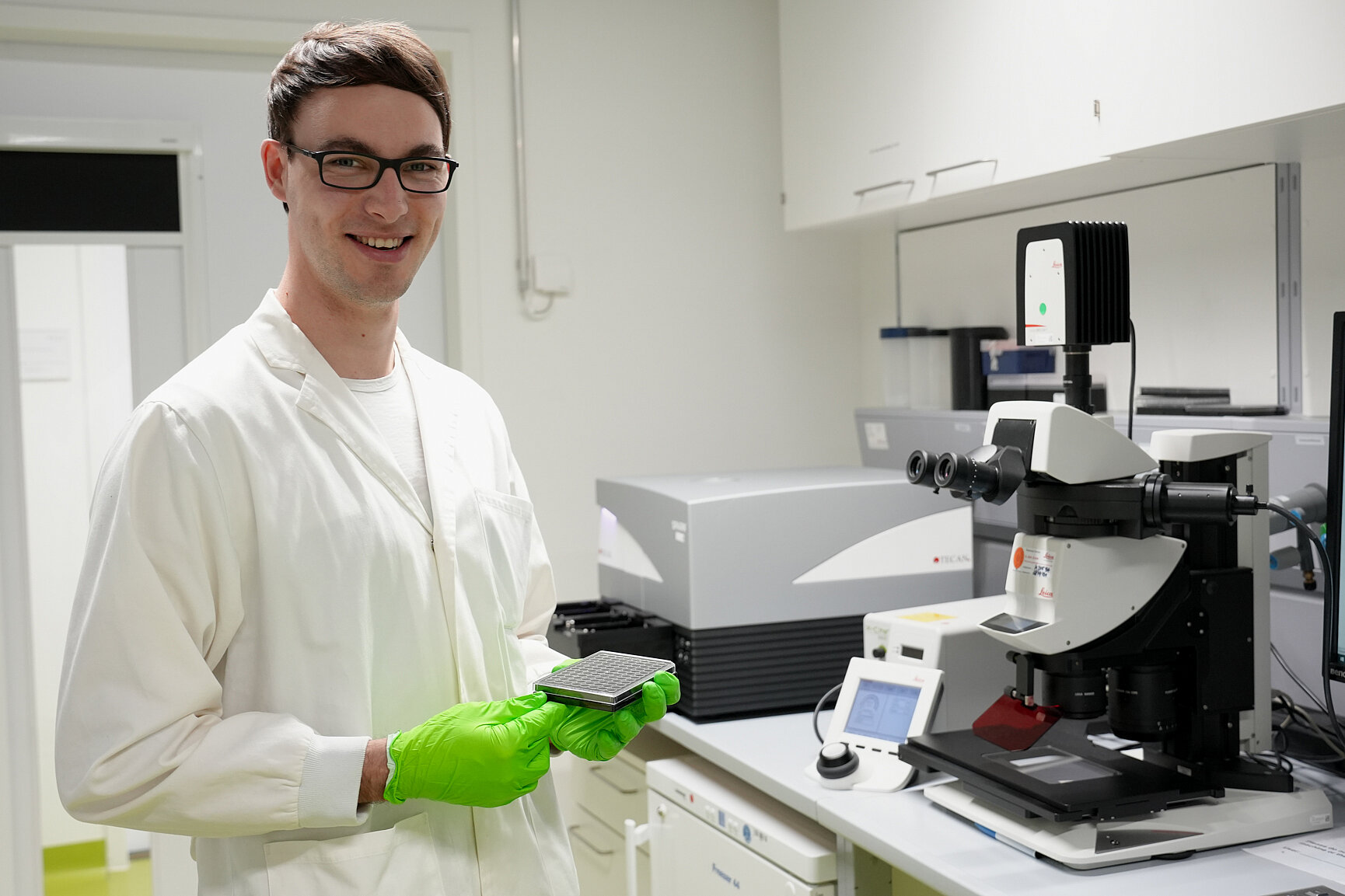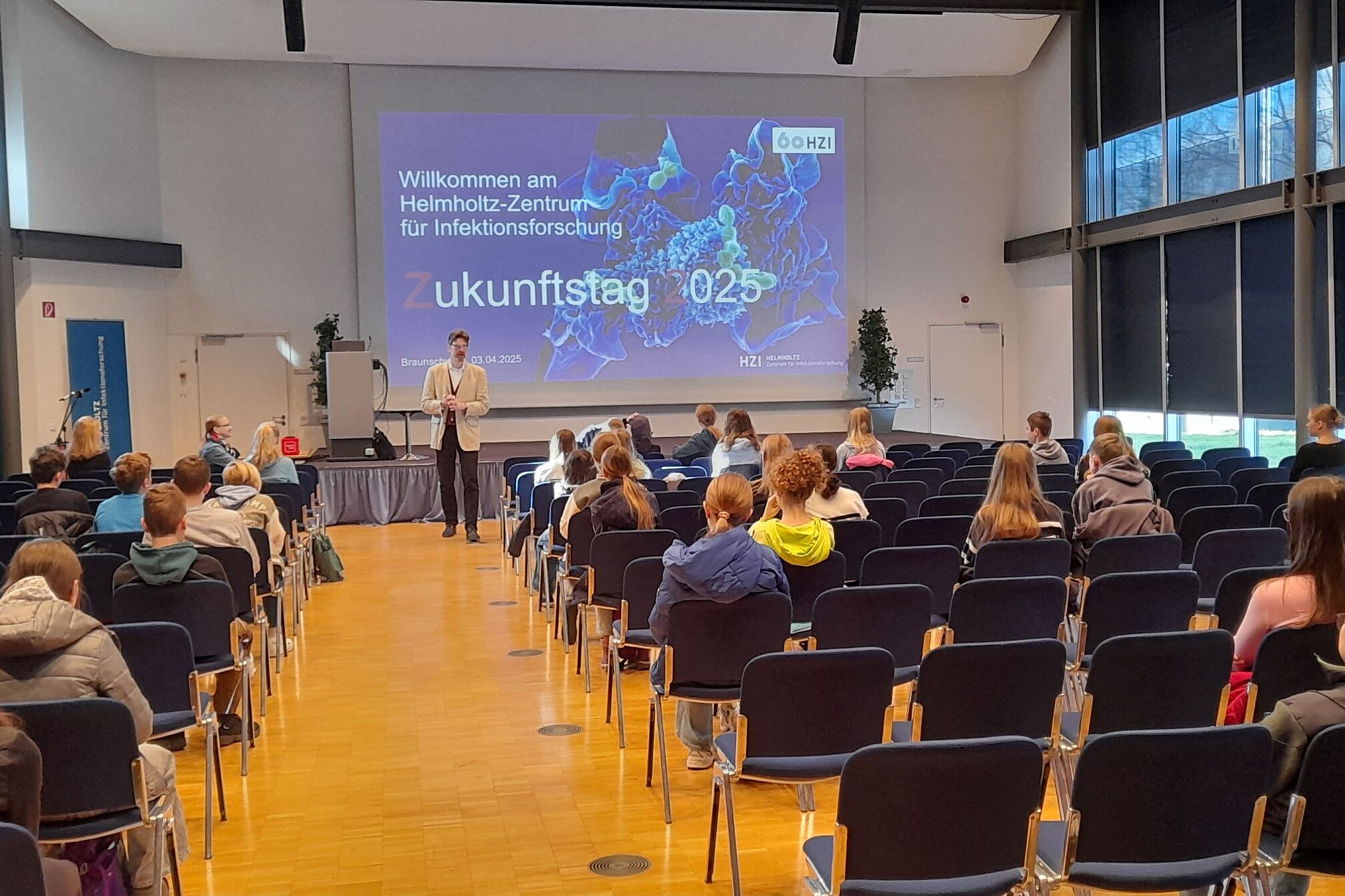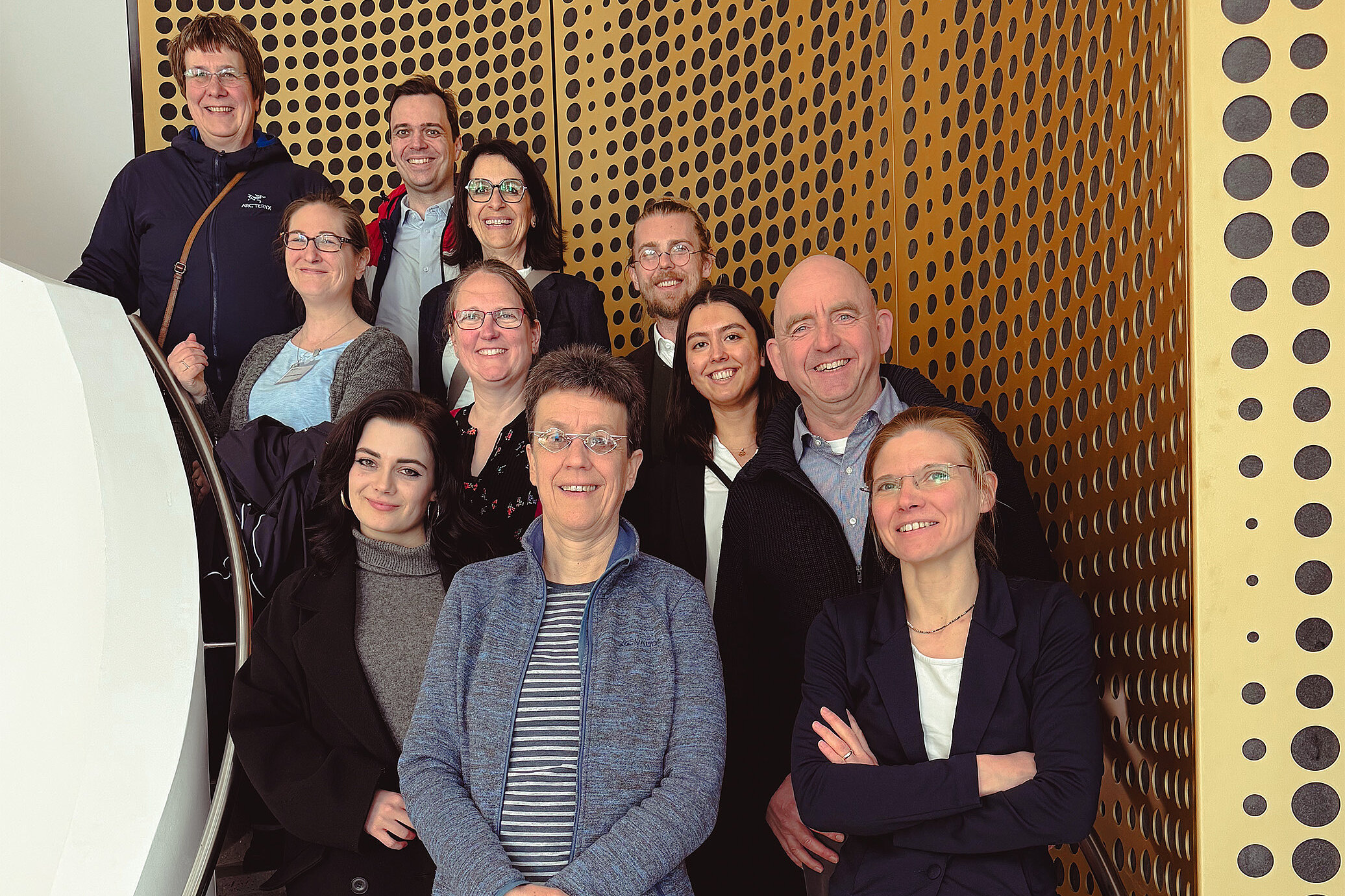
Natural Product Biotechnology

Our research
Throughout evolution, nature has created an unimaginable abundance and diversity of living organisms. Many of these organisms have developed specialized metabolic pathways that produce small molecules – termed natural products — that have functions granting them advantages in their daily fight for survival. These include, for example, natural products with antibiotic, antiviral, or cytotoxic effects, which also have great potential for use in human medicine.
The goal of our department is to explore the world of microbial natural products for the targeted discovery and optimization of compounds to fight infectious diseases. Using modern bioinformatic approaches and the development and application of molecular biology and biotechnology tools, we contribute to the discovery of novel bioactive substances from microbial sources. By altering the genetic pathways involved in natural product biosynthesis, we enable targeted structural optimization and improved production of these substances. We examine in detail the enzymatic processes nature uses to build complex natural products, making particularly interesting enzymes usable in the lab, and applying them for efficient biocatalytic or chemo-enzymatic drug synthesis. Overall, our research not only enables efficient exploration of natural products, but also facilitates the systematic investigation of their biological potential beyond the structures directly accessible from nature.
Our research
Throughout evolution, nature has created an unimaginable abundance and diversity of living organisms. Many of these organisms have developed specialized metabolic pathways that produce small molecules – termed natural products — that have functions granting them advantages in their daily fight for survival. These include, for example, natural products with antibiotic, antiviral, or cytotoxic effects, which also have great potential for use in human medicine.
The goal of our department is to explore the world of microbial natural products for the targeted discovery and optimization of compounds to fight infectious diseases. Using modern bioinformatic approaches and the development and application of molecular biology and biotechnology tools, we contribute to the discovery of novel bioactive substances from microbial sources. By altering the genetic pathways involved in natural product biosynthesis, we enable targeted structural optimization and improved production of these substances. We examine in detail the enzymatic processes nature uses to build complex natural products, making particularly interesting enzymes usable in the lab, and applying them for efficient biocatalytic or chemo-enzymatic drug synthesis. Overall, our research not only enables efficient exploration of natural products, but also facilitates the systematic investigation of their biological potential beyond the structures directly accessible from nature.
Tobias Gulder
We use bioinformatics, biotechnology, and (bio)catalysis to explore and optimize microbial natural products as new drugs against infectious diseases.

Tobias A. M. Gulder holds degrees in Chemistry from the University of Würzburg (Diploma 2004, PhD 2008). After postdoctoral training at the Scripps Institution of Oceanography with Bradley Moore (2008-2010) he started his independent work as a Liebig and Emmy Noether fellow at the University of Bonn (2011-2014) mentored by Jörn Piel. In 2014, he accepted the offer to join the Technical University of Munich as Professor of Biosystems Chemistry at the Department of Chemistry and the Center for Integrated Protein Science Munich (CIPSM). In 2019, he became the Chair of Technical Biochemistry at the Technical University of Dresden. Since 2024, he is chair of Natural Product Biotechnology at the Saarland University and Department Head at the Helmholtz Institute for Pharmaceutical Research Saarland (HIPS). His group is interested in the structure, biosynthesis and synthesis of bacterial natural products. This includes the elucidation of new biosynthetic transformations and their application to the biocatalytic synthesis of natural products as well as the manipulation of biosynthetic pathways to generate new molecular structures. Since 2017, he is member and since 2019 Chair of the Editorial Board of the Journal Natural Product Reports (RSC).
Selected Publications
S. Schuler, M. Einsiedler, J. K. Evers, M. Malay, V. Uka, S. Schneider, T. A. M. Gulder; Expanding Polycyclic Tetramate Macrolactam (PoTeM) Core Structure Diversity by Chemo-Enzymatic Synthesis and Bioengineering; Angew. Chem. Int. Ed. 2025, 64, Early View. doi: 10.1002/anie.202420335
M. Einsiedler, K. Lamm, J. F. Ohlrogge, S. Schuler, I. J. Richter, T. Lübken, T. A. M. Gulder; Product Selectivity in Baeyer–Villiger Monooxygenase-Catalyzed Bacterial Alkaloid Core Structure Maturation; J. Am. Chem. Soc. 2024, 146, 16203–16212. doi: 10.1021/jacs.4c04115
M. Einsiedler, T. A. M. Gulder; Discovery of extended product structural space of the fungal dioxygenase AsqJ; Nat. Commun. 2023, 14, 3658. doi: 10.1038/s41467-023-39111-2
P. M. D'Agostino, C. J. Seel, X. Ji, T. Gulder, T. A. M. Gulder; Biosynthesis of cyanobacterin, a paradigm for furanolide core structure assembly; Nat. Chem. Biol. 2022. doi: 10.1038/s41589-022-01013-7
C. Greunke, E. R. Duell, P. M. D'Agostino, A. Glöckle, K. Lamm, T. A. M. Gulder; Direct Pathway Cloning (DiPaC) to Unlock Natural Product Biosynthetic Potential; Metab. Eng. 2018, 47, 334–345. doi: 10.1016/j.ymben.2018.03.010
Publications
A complete list of publications can be found on the HIPS website.



